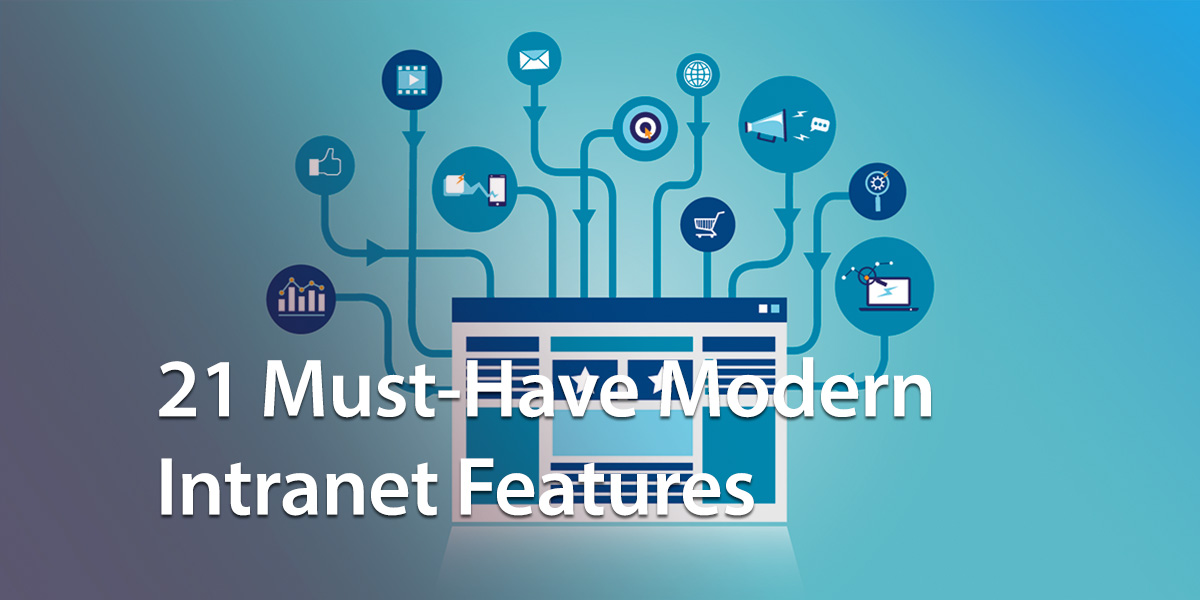With up to 3.5 quintillion bytes of data generated every day, it’s no surprise information overload is a real challenge for companies. It can hamper agility, innovation, and productivity. And it’s a great source of frustration for your people. Did you know that employees spend at least 25 percent of their working week looking for information, people, or resources they need to get the job done? Finding ways to quickly and easily share company knowledge and expertise is essential if you want to maintain a competitive advantage. A knowledge management strategy will help you get there. It saves employees time, effort, and hassle. It will foster collaboration and support innovation. And it means you’re making the most of business knowledge with better and faster decision-making. Even better, customers benefit from the consistent and knowledgeable service frontline employees offer.
If you haven’t got a knowledge management system in place, now’s the time to do so. Today’s post makes developing a knowledge management strategy easy with a simple eight-step process.
Ready to get started? Let’s dive in with a definition of knowledge management.
What Is Knowledge Management?
Knowledge management describes the systems and processes organizations have in place to publish, manage, share, and capitalize on internal expertise. It refers to both external and internal sources of knowledge.
Advances in technology and the advent of the internet have meant that businesses are now inundated with data. Managing all that vital information requires an effective knowledge management strategy.
Companies that manage knowledge well have better decision-making capabilities, are more productive, and are able to innovate. They also tend to have more engaged staff as expertise and experience are recognized and rewarded. With these sorts of benefits on offer, developing a knowledge management strategy is mission-critical.
What Is A Knowledge Management Strategy?
It’s a comprehensive plan that sets out your organization’s knowledge management practice. It describes how you capture, manage, and share all that internal know-how. A knowledge management strategy helps you tackle problems like informational or functional silos and poor knowledge flow or loss.
A strategy ensures you share knowledge and develop a robust knowledge base to enhance productivity and meet business objectives.
What Are The Key Components Of A Company’s Knowledge Management Strategy?
An efficient knowledge management strategy has several common hallmarks. Here are the crucial components your knowledge management process needs to have:
- people and culture
- processes
- content
- technology
Let’s take a look at each in turn.
People And Culture
Put people at the heart of your knowledge management practices. This is the essential starting point for maximum benefit. Make knowledge transfer and knowledge sharing a part of your company culture. Think about your employees and business units’ information needs. Build your strategy around your people, and remember, there are two aspects to consider. The first is those workers who need knowledge. And the second is employees who are tasked with overseeing the knowledge management system. Make sure your strategy addresses the needs of both.
Processes
This sets out the process for capturing and sharing internal expertise. Identify the knowledge management tools you need to help you. It could be mentoring programs, knowledge transfer meetings, or a checklist. Next, consider the most effective knowledge-sharing channels. A searchable knowledge base is a minimum. Some organizations also opt for a business unit or departmental knowledge base. The goal is to have a people-centered, easily accessible framework.
Content
Your people are a diverse bunch. They’ll have different learning styles and preferences. Your KM strategy needs to address that diversity with a variety of channels and formats. Here are just some of the knowledge-sharing possibilities to consider:
- explainer videos
- podcasts
- wikis
- webinars
- infographics
The bottom line is that content doesn’t always have to be text-based. So, get creative about how knowledge is delivered, and you’ll satisfy the needs of more employees.
Technology
There are a wealth of knowledge management tools and knowledge base software to make your task a bit easier. Options include specialist knowledge management systems, intranets, digital adoption platforms, or knowledge management software. Even the humble document management system is a knowledge management tool. Thoroughly research all the options. At the end of the day, you want to adopt a technology solution that aligns with your business strategy and integrates with existing systems. And remember, a people-centered approach should be your guiding star.
What Is A Knowledge Management Strategy Important?
Knowledge management strategies benefit employees, customers, and the organization. Let’s break down the advantages for each group of stakeholders.
Employees
- Save time on sourcing information and data
- Fill knowledge gaps quickly and effectively
- Highlight internal subject matter experts
- Improve problem-solving abilities
Customers
- Ensure consistent customer service is received regardless of location or personnel
- Deliver top-notch customer service as knowledgeable staff can answer queries and resolve problems quickly
Organization
- Raise internal awareness of knowledge management
- Ensure the company’s knowledge is retained even when workers leave
- Plug knowledge leaks
- Eliminate information silos
- Support informed decisions and cross-functional collaboration
- Improve the organization’s processes
- Boost productivity and minimize lost revenue as less time’s spent searching for information and more time’s devoted to doing
What Are The Different Types Of Internal Knowledge?
Before you can dive into developing a knowledge management strategy, you need to understand the different types of knowledge. Most company knowledge assets can be broken up into two main types:
- explicit knowledge
- implicit knowledge
Explicit Knowledge
This knowledge is the kind that you find in manuals, policies, and procedures. It’s tangible, making it easy to articulate, communicate and share. Usually, it’s acquired through formal education, training, and practice.
Implicit Knowledge
Sometimes called tacit knowledge, this category is harder to define. It’s personal wisdom, insight, and intuition. Implicit knowledge is acquired from experience, on-the-job practice, and observation. And because it’s a slippery concept, capturing and sharing implicit knowledge is more challenging.
Your knowledge management strategy must capture both types, including elusive tacit knowledge.
How Do I Develop A Successful Knowledge Management Strategy?
Now is the time to put the theory into practice and develop a KM strategy. And it’s not as complicated as you might think if you follow our eight-step best practice process.
1. Set Up A Knowledge Management Team
Creating a knowledge management strategy is too big a job for one person. Plus, a cross-departmental team helps you get buy-in from the entire workforce. Just make sure it’s headed up by a C-suite exec or senior manager. That way, the team has the necessary clout and resources behind it. Get the KM team focused on delivering the following steps.
2. Identify Your Goals And Objectives
The knowledge management team’s first task is to set the strategy’s goals and objectives. The aim could be improving collaboration, fostering innovation, or solving problems. You may want to reduce duplication of effort or onboard new hires more effectively. Remember to be specific. Ambiguous goals just add confusion and make implementation more challenging. This step is focused on aligning knowledge management with business priorities and the needs of your most valuable asset – human resources.
3. Conduct A Knowledge Audit
A knowledge audit helps you understand your organization’s current KM capabilities, gaps, and needs. It allows you to take a step back and gain a complete picture of your current organizational KM status and where it needs to be. Be sure to include all business processes and identify gaps. Furthermore, develop reviewing tools and proper archiving standards for handling outdated or irrelevant content. You don’t want that kind of information clogging up your knowledge base.
4. Select Knowledge Base Software And Tools
Now’s the time to select the technology platform you’ll use to build your knowledge management system. It’s best to have one centralized location for sharing knowledge. And there are lots of options, including intranets, dedicated knowledge management software, and content management systems. So, be sure to do your homework and find the right platform for your business needs.
5. Develop a Knowledge Strategy Implementation Roadmap
Include how company information will be captured, stored, and shared in the roadmap. Develop guidelines for documenting and categorizing knowledge. Create separate segments or spaces for teams, departments, and company-wide information. Segmentation helps to organize content in a way that makes sense for employees. And once you’ve defined your segments, tag all content so it’s easy to find. Finally, set milestones and timelines for each stage of the implementation to ensure you stay on track.
6. Develop A Search Strategy
We’ve touched on this already, but we have made it a separate step because it’s so crucial. In fact, it’s one of the core components of an effective knowledge management strategy. A robust search function helps workers find what they need at the right time. Optimize your search with metadata tagging, full-text search, and previews. Tagging makes navigating your knowledge base simpler and means your people get maximum benefit.
7. Identify Success Metrics
Set some KPIs, so you know your knowledge management is a success. Monitor metrics like frequency of contributions, user engagement, and time saved in sourcing data. Also, consider broader metrics your KM strategy contributes to, such as increased customer satisfaction, employee engagement, or reduced time-to-market. Finally, remember that knowledge sharing is an ongoing process. Use the analytics to review your KM strategy regularly and ensure it keeps pace with changing organizational needs.
8. Spread The Word
Congratulations! Now you are ready to go live. Promote the value of knowledge management and the new system to your employees. Undertake a training and onboarding program so staff know how to use the platform effectively. Survey employees regularly to ensure the knowledge management system makes their daily work easier and meets their needs.
How Can Intranet Software Help Your Knowledge Management Plan?
The intranet is a great starting point if you are developing a knowledge management strategy for your company. And here’s why:
- It’s accessible to all staff.
- Information and knowledge can be shared across the whole organization.
- It’s intuitive and easy to use.
- It integrates with the business enterprise apps you already use, like Office 365, Google Drive, or CRM platforms like Salesforce.
- It has a range of KM tools already loaded and ready to go. These include dedicated project spaces, CMS, file sharing, instant messaging, employee directory, plus notifications and alerts.
Rather than having several knowledge management systems, the intranet is the organization’s go-to platform.
Shared Knowledge Means Empowered Employees
A knowledge management strategy helps unlock hidden knowledge within your organization and empowers staff members. Moreover, a KM strategy ensures that employees contribute their knowledge and expertise easily and quickly. The result is an empowered workforce that feels valued and recognized.
And if that wasn’t enough, there are plenty of bonuses for the company. Successful KM strategies positively impact employee engagement and retention. And it will power up customer satisfaction and loyalty. It helps you solve problems, foster innovation, and make informed decisions.
Harness the power of your organization’s unique knowledge and develop a knowledge management strategy today.
About MyHub
If knowledge management is an issue in your organization, contact the expert team at MyHub. Our easy-to-use software supports knowledge management in businesses worldwide. Under one virtual roof are all the knowledge-sharing tools your workers need. Ready to start on your knowledge management strategy? Sign up for a free demo or 14-day trial today and explore an intranet knowledge base.












